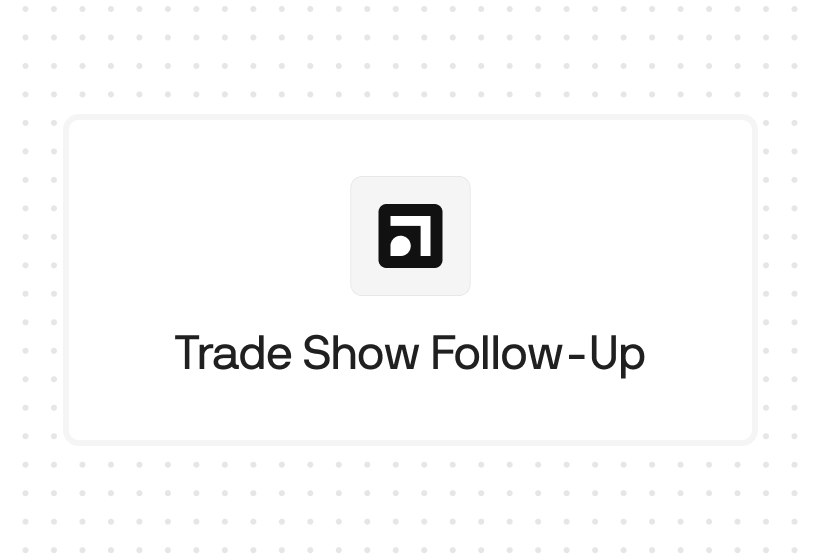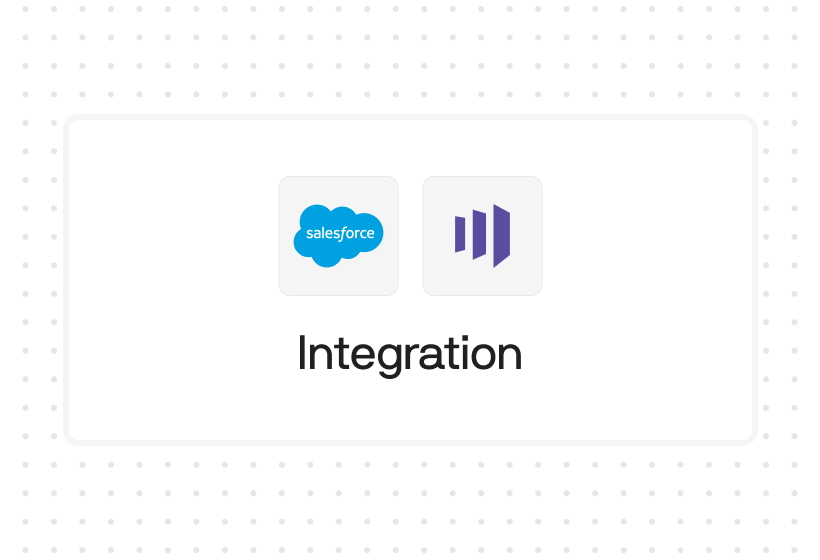Try Default

See how revenue teams automate revenue operations with Default.

Key Takeaways
Let’s face it: buyers are impatient. It’s hard not to be in a fast-paced world of two-click shopping, live chat, and 30-second TikToks. This reality has major implications for B2B marketing and sales, as speed to lead is becoming a top priority.
Consider the following data from HubSpot: 82% of consumers expect an “immediate” response when reaching out to a brand for marketing and sales. The majority of those people define “immediate” as ten minutes or less.
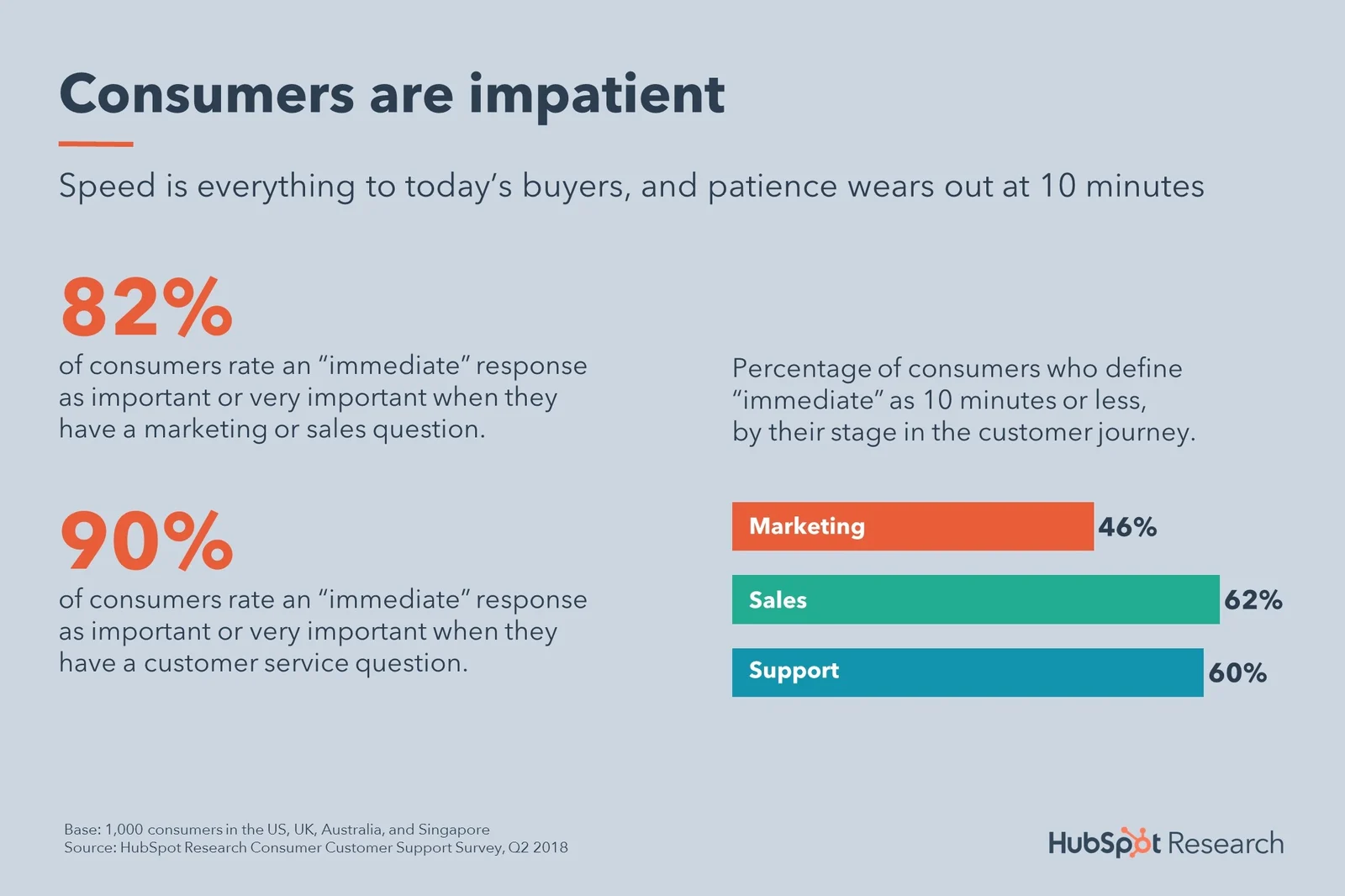
But what does speed to lead look like in B2B buying journeys? How do you measure it? Why does it matter? And, more importantly, how do you accelerate it? Read on for answers to these questions and more.
Key takeaways:
- What is speed to lead and how do you measure it?
- Why is speed to lead important for B2B sales?
- 5 best practices for improving speed to lead
- What tools do you need to accelerate speed to lead?
- Speed to lead FAQs, answered
What is speed to lead?
Speed to lead (also known as lead response time) is, broadly speaking, a measurement of how quickly a business responds to or converts leads from your inbound flows.
The most common definition of speed to lead is the time it takes a business to respond to an inbound lead from the moment they opt-in. We’ve also heard it defined as the time it takes for a meeting to be booked after opt-in, or even the time until the meeting event date.
Regardless of the specific definition you use, most organizations calculate speed to lead on a segment- or organization-wide basis. This is because certain segments (e.g. larger companies, certain industries) have different speeds and expectations. You can calculate this RevOps KPI by dividing the total response times by the number of leads in the segment or organization.
Why is speed to lead so important for B2B marketing and sales?
We’ve written before about the importance of responding to leads in a timely manner. Responding to inbound leads in less than 30 minutes makes you 21X more likely to qualify them. Responding in less than five minutes, you’re 100X more likely to get a response.
And consider the HubSpot data listed above. Yes, that data includes buyers in both B2C and B2B sales cycles. But B2B buyers are people too. And they’re just as immersed in our fast-paced culture as the average consumer.
But low sales response time isn’t just a function of culture. It also has to do with human attention spans. Most people’s attention peaks at a certain point. Once you pass that peak, you’ll never regain that level of attention or enthusiasm again.
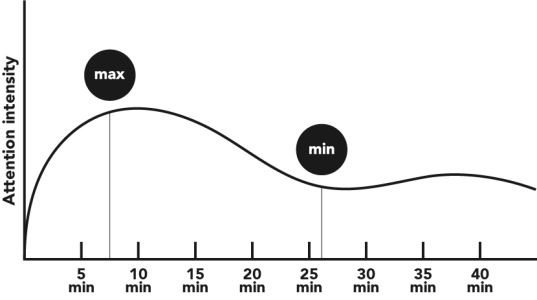
The exact frequency of that peak varies on the person and the object of attention in question. But this general model aligns with what we see in speed to lead data: after five minutes, attention wanes dramatically:
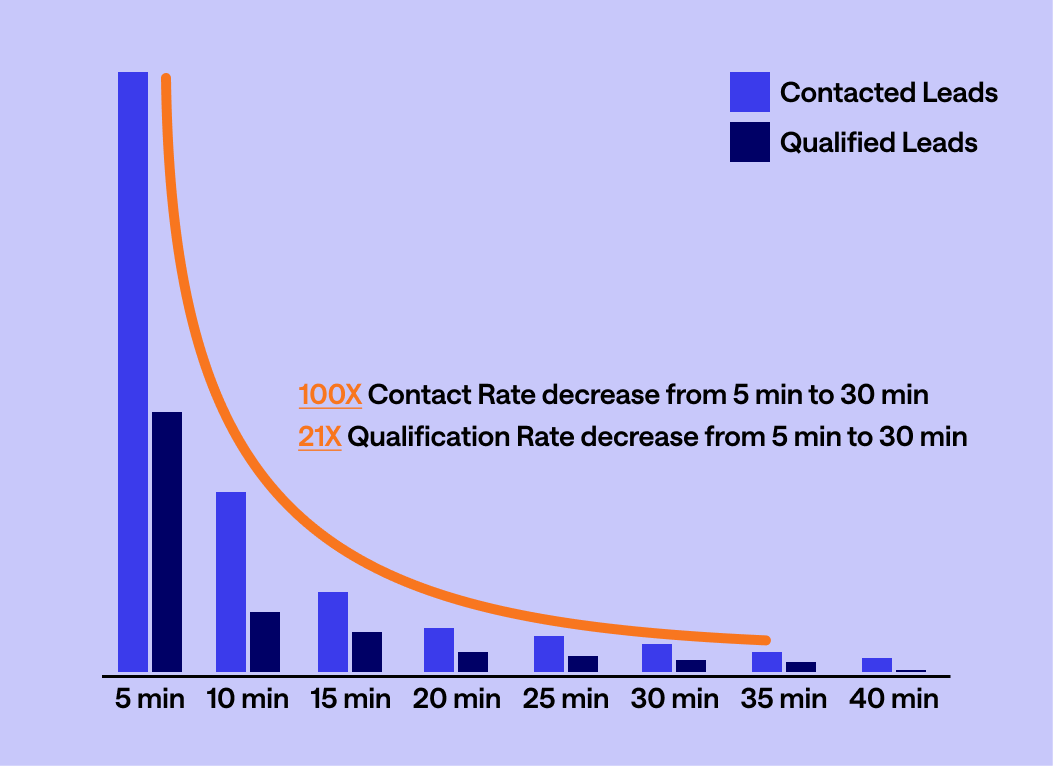
The point is: the faster you respond to a lead, the more likely they’ll end up becoming an MQL.
And your competitors know this data. Which means they’re prioritizing speed to lead as much as possible. So not only will you miss your moment, but you’ll cede ground to the competition.
5 best practices for improving speed to lead
Default recently analyzed 88,047 inbound leads and 19,493 qualified bookings from those leads. Based on those data, we were able to identify five best practices for improving speed to lead. Here’s what we found.
1. Use short forms + lead enrichment
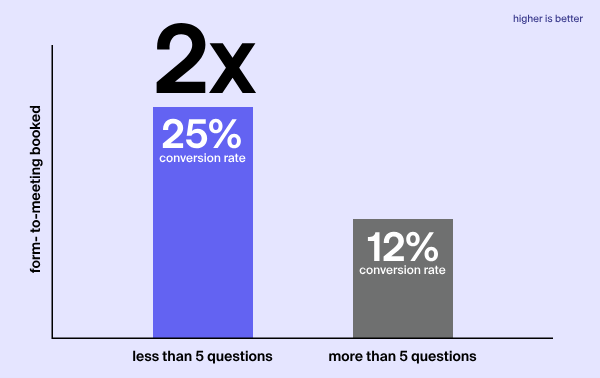
Shorter forms convert more leads. Based on our proprietary data, we found that conversion forms with fewer than five questions converted at a 200% higher rate than those with more than five.
The problem with a shorter form length is that you get limited information on the particular lead in question. Think about it: with five fields, three of those are email, first name, and last name. That’s not a lot to go on.
Sure, your sales team could spend a bunch of time filling in the gaps with manual research, but that’s slow, tedious work. Instead, use automated enrichment to pull in hundreds of data points. Armed with that information, your reps will be able to respond faster and in a more personalized way.
2. Integrate scheduling with website forms
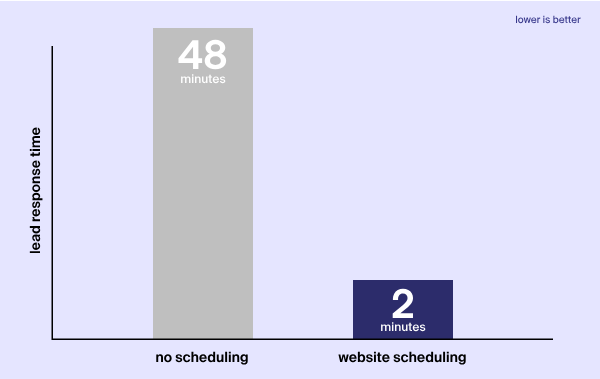
Probably one of the most powerful takeaways from our recent research was the impact integrating sales scheduling software with online forms has on speed to lead. The result is a 240X faster speed to lead: from 48 minutes all the way down to just two!
3. Automated follow-up with converted leads
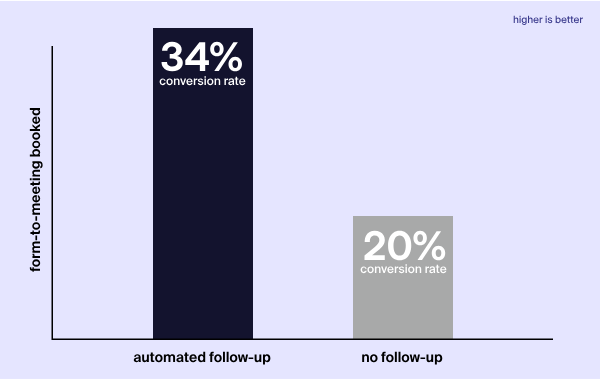
Sometimes, a lead fills out a form and before you contact them they get sidetracked, called into a meeting, or pulled in to put out a fire (figuratively, I hope). By automating follow-up with that lead, you can improve your conversion rate from 20% to 34%.
4. Leverage AI to summarize lead data
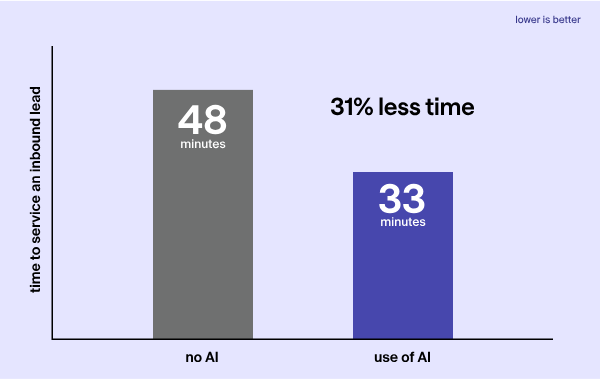
Having hundreds of data points on a lead can be a double-edged sword. Yes, it can help improve your lead scoring model and the effectiveness of your lead routing system. But it can also overwhelm sales reps with too much information, slowing their response times.
AI summaries, however, help reps service inbound leads 31% faster. This is not only due to faster lead qualification, but also AI surfacing insights that enable more personalized outreach.
5. Automated contact & account creation
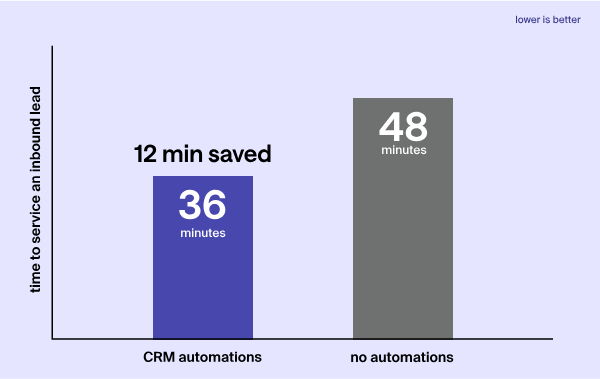
Often lead response time slows solely because of administrative burden. One of these areas is the tedious task of creating or updating records in the CRM. By using automations to create, update, and enrich contact and account records, reps can qualify leads 12 minutes faster than without automations.
Speed to lead FAQs
What is the 5-minute speed to lead rule?
The 5-minute speed to lead rule is that responding to an inbound lead in less than five minutes makes you 100X more likely to get a response.
What is lead response time?
Lead response time is the same as speed to lead. This is the time between a lead’s qualified conversion and the organization’s response.
How do you calculate your speed to lead?
You can calculate your speed to lead using a simple formulate. First, identify the time between every lead’s qualified conversion and the first contact from your organization. Second, add up all those numbers. Finally, divide that total by the number of leads.
Increase speed to lead by 67% with Default
When it comes to accelerating speed to lead, Default’s record speaks for itself. We increase speed to lead by 67% for our clients. Our integrated platform, AI powered enrichment and summary tool, as well as our smart and flexible workflows all reduce friction rather than add to it.
Want to see what Default can do for your marketing and sales organization? Schedule a demo today.
Conclusion

Run revenue as an engineered system
Revamp inbound with easier routing, actionable intent, and faster scheduling








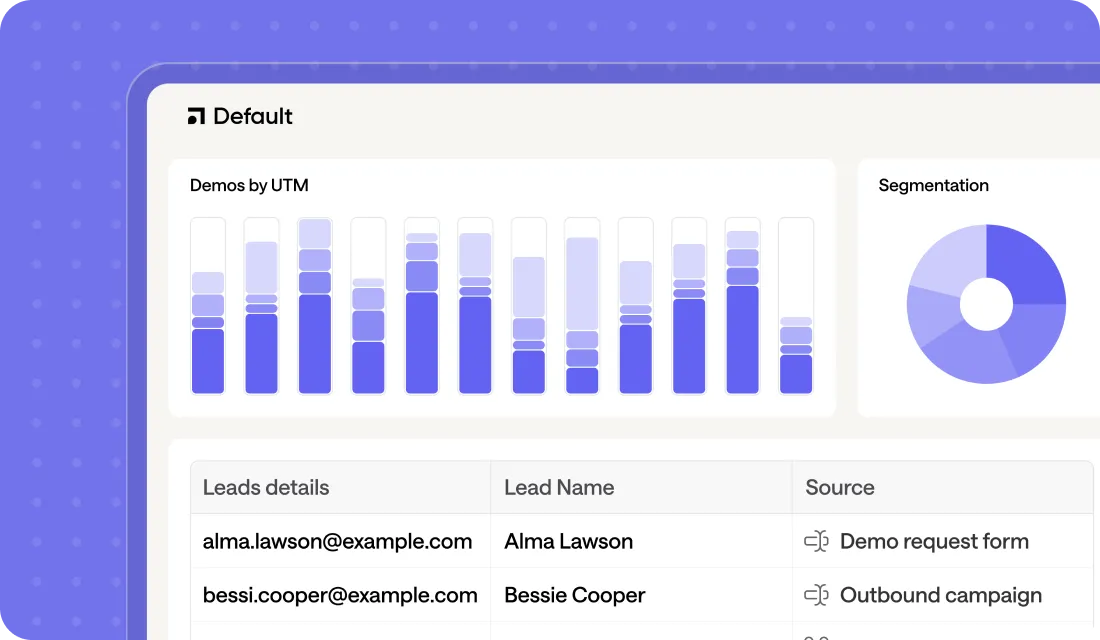
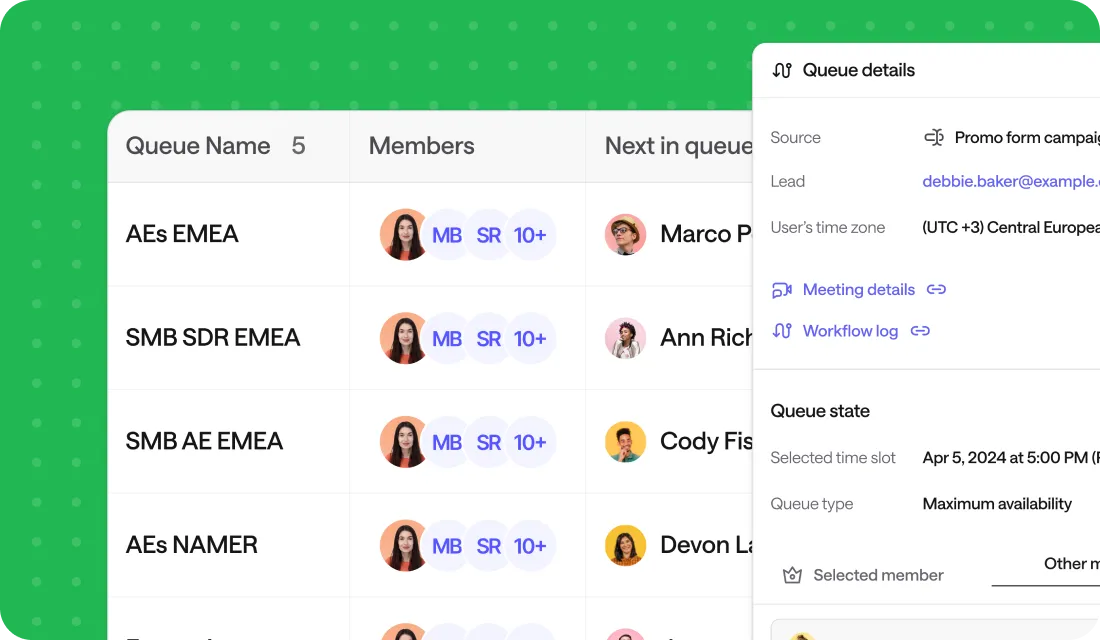




.png)
